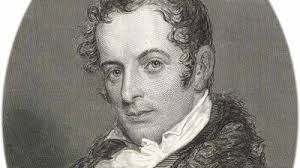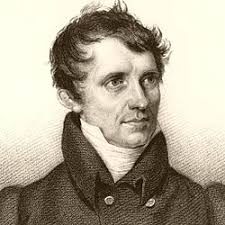3-The Rise of American National Literature
متطلبات الإكمال
2. Prominent Authors and Works
· Knickerbocker Era 1810-1840
In the
early 19th century, New York was the center of American writing. The writers
are known as “Knickerbockers”. The name comes from a History of New York, by
Diedrich Knickerbocker by Irving Washington. It is a humorous book about the
local history of the city. He laughs at the Puritans and Dutch governors. He
invented many events and legends. His aim is to give New York a special local
color.
·
Irving Washington

Born in 1783 in New York City, Washington
Irving came from a Scottish-English family and according to Edwin W. Bowen,
‘’Washington Irving [was] properly accorded the first place among the pioneers
in American literature’’. He moved to England in 1815; however, after the
company that he worked became bankrupt, he turned his attention into writing.
He was a great observer of European literature. He borrowed the origin of Rip
Van Winkle from a German folk tale titled "Karl Katz." and published
it in 1819. The reason for borrowing was the lack of specific American themes
and issues at the time. However, Washington Irving strewed American features
into Rip Van Winkle. He became the first person to use the short story form of
fiction and gained international respect for American Literature, noted for his
contributions to a burgeoning national literature. According to Fiedler, Rip “presides over the birth of the American
imagination” (6). In addition, he is “[t]he guardian angel and symbol of the mythic American” (Leary
22-23)
The Sketch Book contains two small
masterpieces that initiated the great tradition of the American short story,
“Rip Van Winkle” and “The Legend of Sleepy Hollow.” Four other sketches are
also set in America, but most of the other pieces are descriptive and thoughtful
essays on England, where Irving was still living. It contains 32 stories. The majority are on
European subjects, mostly English. For Washington Irving, “We are young people
and must take our examples and models from the existing nations of Europe”
(High 31)
Both “Rip Van Winkle” and “Sleepy Hollow”
have origins in German folklore, but Irving fills them with the local color of
New York’s Hudson River Valley. Irving
admits as much in a “Note” to the first tale. Both also owe a debt, in terms of
stylistic influence, to Sir Walter Scott. Nevertheless, both exploit their
specifically American settings and create American myths: they explore the
social and cultural transformations occurring in America.
In his best work, Irving was a creator of
significant American myths: narratives that gave dramatic substance to the
radical changes of the time, and the nervousness and nostalgia those changes
often engendered. Perhaps he was so effective in fashioning those myths because
the nervousness about the new America, and nostalgia for the old and, beyond
that, for Europe- were something that he himself felt intensely. He was writing
himself, and the feelings he typified, into legend.
His literary works include Bracebridge Hall,
Tales of a Traveler, The Alhambra, The Life and Voyages of Christopher Columbus
and The Conquest of Granada. Irving was the first to earn his living through
literature.
Another Knickerbocker writer, James Kirke
Paulding, contributed to early American literature with works like The
Dutchman’s Fireside, an amusing satire set in colonial America. His writing
reflects anti-Indigenous views and support for slavery. Like other
Knickerbocker writers, Paulding did not attempt to represent the entire
American continent; instead, his focus remained firmly on New York and its
regional culture, reflecting the localized perspective common among this
literary group. (High 33)
·
James Fenimore Cooper

